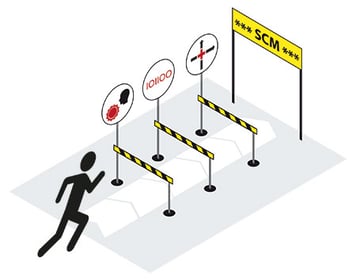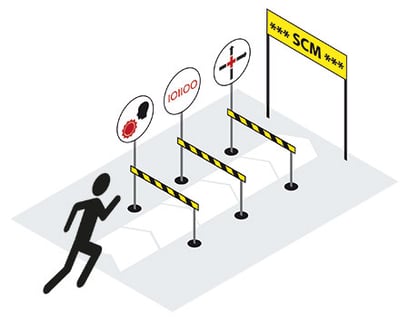On Putting Transport Logistics to Work
Brian Hoey - January 30, 2018

 In a recent piece offering predictions for the state of supply chain management (SCM) in 2018, Gartner asserted that SCM was going to become increasingly technology-centric, with market forces putting tremendous pressure on manufacturers to adopt new and emerging technologies. When companies search for areas where their IT might be modernized, many may look to transport as a business process that can be further optimized through the adoption of modern logistics software. Once a new solution is adopted, however, it’s crucial that companies understand their technology well enough to get the most out of it, so that they can improve workflows and add value. To that end, here is a quick guide to putting transport logistics to work within your organization.
In a recent piece offering predictions for the state of supply chain management (SCM) in 2018, Gartner asserted that SCM was going to become increasingly technology-centric, with market forces putting tremendous pressure on manufacturers to adopt new and emerging technologies. When companies search for areas where their IT might be modernized, many may look to transport as a business process that can be further optimized through the adoption of modern logistics software. Once a new solution is adopted, however, it’s crucial that companies understand their technology well enough to get the most out of it, so that they can improve workflows and add value. To that end, here is a quick guide to putting transport logistics to work within your organization.
Delivery Windows
The first and perhaps most apparent goal of a modern transport solution is to add efficiency and therefore business value to the scheduling and routing of deliveries. On its most basic level, the software should take input regarding the rules and constraints that define the particular transport requirements of a given business and turn that input into actionable planning insights. Making use of this functionality will require a modicum of cross-organizational visibility (i.e. planners will have to understand the state of, say, current fleet or container usage, as well as customer delivery expectations and throughput/supply stream information), but it stands to shed new light on transport processes and help drive a shift from rigid, pre-defined delivery schedules to dynamic deliveries. Rather than relying on past demand and previous schedules, planners will be empowered to take a more proactive, future-oriented approach to transport planning.
Many manufacturing and freight forwarding businesses struggle to stay agile and flexible across the supply chain, but using transport logistics in this manner helps to do just that, ensuring that routing, container usage, load and unload scheduling, and other factors are optimized to weather any disruptions in the supply chain. Logistics across all transport functions can evolve with changing demands and constraints to increase accuracy and on-time performance, resulting in improved customer experience and more efficient resource usage.
Integration with other technologies
Once transport logistics have been put to work in driving a change toward more dynamic shipping and delivery schedules, the next frontier is integration with other technology. Specifically, this means incorporating a transport solution into existing Industry 4.0 workflows. This will require a Postmodern ERP mindset, in which different IT solutions are linked together in an interconnected, interoperable system to boost visibility and reduce planning siloes, but the resulting increase in overall agility will help ensure that planning efforts are informed by data from everyone touchpoint on the value stream. This can take a number of forms:
- Integration with sensors and Internet of Things (IoT) devices can add real-time capabilities to planning infrastructure. Real-time data improves decision making, increases visibility, and aids flexible planning.
- Integration with advanced analytics for prescriptive analytics, enabling businesses to further optimize routes, enhance asset utilization, and improve order life cycles.
- Connection of disparate points on the value chain to boost collaboration and help identify potential bottlenecks.
As a result of this type of integration, transport logistics can go beyond mere improvements to schedules and routing and become a powerful tool for responding to disruptions anywhere on the supply chain. Late shipments, demand forecast errors, and other potential hiccups that don’t traditionally fall under the transport umbrella can be managed more smoothly with a complete view of a company’s entire resource structure, including transport.
Forecasts and What-ifs
Prescriptive analytics were alluded to above as a potential optimization tool, and, indeed, advanced analytics are in many ways the best method for getting the most out of transport planning technology. The improved visibility and data quality that result from adopting a transport logistics solution can be a gateway to the use of analytics, which, in addition to providing new, holistically derived insights into key transport processes, can also develop more accurate forecasts. Rather than relying on the past for instruction, transport planners can make more educated predictions about future demand and potential transport disruptions. More than that, planners and supply chain managers can create “what-if” scenarios to test out potential improvements to their transport plans. The resultant analytical assessments can offer real-time insights into the likely ramifications of a given decision, thereby helping planners to choose the logistical scenario that best minimizes cost, prepares for supply chain risk, and ensures on-time delivery.
LATEST POSTS
- Understand Why Production Planning Needs Specialized Solutions
- Understand Circular Economy in The Manufacturing Industry
- How Can Industry 4.0 IT Integration Be Achieved Smoothly?
- The Significance of Order Sequencing in Discrete Manufacturing
- How to improve your Supply Chain Management: The Power of Control Towers



